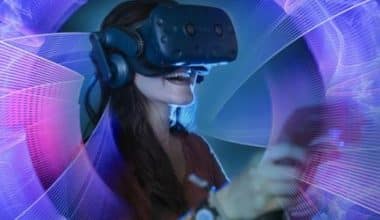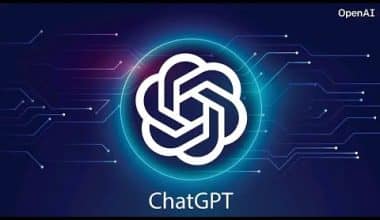People often use the terms “machine learning” and “artificial intelligence” (AI) equally, but there are important differences between the two. Find out what these are and how AI is changing our world. In this article, you will learn more about, AI vs machine learning, its examples, symbolic AI vs machine learning, data science vs. AI vs machine learning, and types of machine learning.
AI vs Machine Learning
AI is, in the simplest terms, computer software that imitates the way people think so that it can do complicated tasks like analyzing, reasoning, and learning. Machine learning, on the other hand, is a branch of AI that uses algorithms trained on data to make models that can do these kinds of complicated jobs. Most AI today involves working with machine learning, therefore, the words are frequently used interchangeably. But AI is the big idea of making computer software and systems reason like people, while ML is just one way to do that.
Artificial Intelligence (AI)
Artificial intelligence is a branch of computer science that is used to make computer systems that can act like humans. It is made from the words “artificial” and “intelligence,” and it implies “human-created thinking power.” So, we can say that artificial intelligence is a type of technology that allows us to make intelligent systems that can act like humans. The Artificial Intelligence system doesn’t need to be designed ahead of time. Instead, it uses algorithms that can work on their own. It uses machine learning methods like the Reinforcement Learning Algorithm and deep learning neural networks. AI is used in a lot of places, like Siri, Google’s AlphaGo, playing chess with AI, and so on.
Machine Learning (ML)
Machine learning is the process of learning from data. It can be described as a branch of artificial intelligence that allows computers to pick up knowledge from past data or experiences without having to be explicitly programmed. Machine learning helps a computer system use past data to make predictions or make some choices without being specifically programmed to do so. A machine learning model needs to use a lot of semi-structured as well as structured data in order to come up with accurate results or formulate predictions on the basis of that data.
AI vs ML Examples
The following are the AI vs ML Examples
AI Examples
Artificial intelligence can do jobs very well, but it hasn’t gotten to the point where it can connect with people on an emotional level yet. Nevertheless, here are some examples of AI.
#1. Robotics
An industrial robot is an excellent example of AI. Industrial robots can check their own accuracy and performance, and they can also sense when they need repair to avoid costly downtime. It can also act in places it has never been before.
#2. Personal Assistants
Personal assistant tools, which are human-AI interface gadgets, are another kind of AI. Google Home, Siri by Apple, Alexa by Amazon, and Cortana by Microsoft are the most famous personal assistants. Users can use these personal assistants to find information, book hotels, add events to their calendars, get answers to questions, set up meetings, send texts or emails, and so on.
ML Examples
Machine learning, or ML, is a type of AI that can automatically learn from data without coding or assistance from subject-matter experts. Here are some examples of ML.
#1. Product Recommendations
Most e-commerce sites have tools that use machine learning to make suggestions about different goods based on past data. For example, if you search Amazon for books about machine learning and then buy one of them, the home page of Amazon will show you a list of other books about machine learning if you come back after a certain amount of time. It also tells you what to buy based on what you’ve liked, put in your shopping cart, and done other similar things.
#2. Email Spam and Malware Filtering
Unwanted business bulk emails (called “spam”) are a big problem for people who use the internet. The majority of email service providers today use machine learning tools to automatically learn how to spot spam emails and fake messages. For instance, Gmail and Yahoo mail spam blockers do more than just use pre-set rules to look for spam emails. As they continue to sort spam, they come up with their own new rules based on what they have learned.
Symbolic AI vs Machine Learning
Symbolic Artificial Intelligence (AI) is a branch of AI that deals with handling and manipulating symbols or ideas instead of numbers. The goal of symbolic AI is to make smart systems that can think and reason like humans by expressing and manipulating data as well as reasoning based on logical rules.
Symbolic AI vs machine learning means it is different from methods like machine learning and deep learning because it doesn’t need a lot of training data. Symbolic AI, on the other hand, is built on representing and reasoning about knowledge. This makes it better for areas where knowledge is well-defined and can be represented in logical rules.
Contrarily, machine learning needs huge datasets in order to identify patterns and generate predictions. Deep learning employs neural networks to learn characteristics directly from data. This makes it good for areas with complex and unstructured data.
When to use each method depends on the type of problem and the information that is available. Symbolic AI works well in areas where the knowledge is clear and organized, while machine learning and deep learning work well in areas with a lot of data and complicated patterns.
Data Science vs AI vs Machine Learning
Data Science uses AI (and its subset, Machine Learning) to understand historical data, spot trends, and make predictions. In this case, AI and Machine Learning help data scientists find ideas from the data they collect.
As was already said, Machine Learning is a type of AI that pushes Data Science to the next level of automation. Data Science and Machine Learning are related in a lot of ways. Part of the field of data science is machine learning. Data science gives Machine Learning algorithms data that they use to learn and get smarter and better at making predictions. So, Machine Learning systems need the data because they can’t learn without using it as a training set.
Key Differences in AI, Machine Learning, and Data Science
Artificial intelligence means that, in some way, the machine acts like a person. Machine Learning is a part of AI, which means that it lives with other parts of AI. Machine Learning is a set of methods that allow computers to draw conclusions from data and give those conclusions to AI apps.
Data Science is useful for more than just AI and machine learning. In Data Science, knowledge can come from machines, mechanical processes, IT systems, etc. It might not be about learning at all. It could just be a way to show facts.
AI can also be used as a tool for data insights in Data Science. The main difference is that Data Science looks at the whole process of gathering, preparing, and analyzing data. It’s not just about the mathematical or statistical parts. So, while specialists in Machine Learning and AI are busy developing algorithms throughout a project’s lifecycle, data scientists must be more adaptable and switch between different data occupations dependent on what the project requires.
Analysis, representation, and making predictions are all parts of data science. It uses different statistical methods. AI and Machine Learning, on the other hand, use models and algorithms to guess what will happen in the future.
AI vs Machine Learning vs Data Science: How They Work Together
Machine Learning is a branch of AI that tries to make machines learn and act like people do while also improving their own learning over time. The most important part of Data Science is getting new results from data, like finding meaning, finding problems you didn’t know existed, or fixing hard problems. To get these results, you can think of it as a process of gathering data, getting it ready, analyzing it, and making it better. AI and machine learning are tools that Data Science uses to get real and useful insights. Tools that enable regular people to become data scientists and gain new insights from data are now being used more and more.
To sum up, as you can see from all of these examples, AI, Data Science, and Machine Learning are not meant to replace humans in their analytical, tactical, or strategic roles. Instead, they are meant to help humans make new progress by working with them. Instead, it can be seen as a tool that can help people get new ideas, be more motivated, and help the company do better.
Types of Machine Learning
Machine learning is the process of giving a machine a lot of data so it can learn from it and make predictions, find trends, or sort data. There are three types of machine learning: supervised training, unsupervised learning, and learning through feedback.
A business consulting company called Gartner thinks that supervised learning will still be the most popular way for enterprise IT leaders to use machine learning in 2022 [2]. In this type of machine learning, past data on inputs and outputs are fed into machine learning algorithms. Processing is done between each set of inputs and outputs, which allows the algorithm to change the model so that the outputs are as close as possible to the desired result. In supervised learning, methods such as neural networks, decision trees, linear regression, and support vector machines are often used.
This type of machine learning is called “supervised” because you give the algorithm details to help it learn as it works. The machine-named data you provide is the output, and the rest of the details you provide is used as input features.
#1. Unsupervised Learning
Users have to help a machine learn with supervised learning, but unsupervised learning doesn’t use the same named training sets and data. Instead, the machine searches for less obvious patterns in the data. This type of machine learning is very useful when you need to find patterns and make choices based on data. Unsupervised learning usually uses methods like Hidden Markov models, k-means, hierarchical clustering, and Gaussian mixture models.
Using the supervised learning scenario, suppose you didn’t know which clients defaulted on loans. Instead, you would feed the computer with borrower information, and it would seek out patterns amongst borrowers before classifying them into multiple clusters.
#2. Reinforcement Learning
Reinforcement learning is the type of machine learning that is most similar to how people learn. The algorithm or agent used to learn does so by dealing with its surroundings and getting a reward, either positive or negative. Temporal differences, deep adversarial networks, and Q-learning are all examples of common methods.
Back to the example of the bank loan customer, you could use a reinforcement learning algorithm to look at details about the customer. If the algorithm labels them as high-risk and they don’t pay, the algorithm gets a good reward. The program gets a negative reward if they don’t default. In the end, both situations help the machine learn by giving it a better understanding of both the problem and its surroundings.
Which Is Better To Learn AI or ML?
So, should I start with machine learning or AI? If you want to work in areas like natural language processing, computer vision, or robots that use AI, you should learn AI first.
What Is an Example of AI That Is Not Machine Learning?
Rule-based systems like chatbots are one way AI can be used without ML. The robot can answer some questions and help customers because humans set up the rules. There’s no need for machine learning, and all the chatbot needs to be smart is a lot of human information.
Is AI Bigger Than Machine Learning?
Machine learning is a branch of artificial intelligence that makes it possible for a machine or system to automatically learn from its mistakes and get better over time. Machine learning uses algorithms instead of explicit programming to look at a lot of data, figure out what it means, and then make choices based on what it has learned.
Who Earns More: AI or ML?
The average salary for an AI engineer is well over $100,000 per year. Glassdoor says that the average salary in the United States is over $110,000 and that the highest income is $150,000.
Does AI Use a Lot of Math?
Algebra may be a very important part of math in general. In addition to basic math skills like adding, subtracting, multiplying, and dividing, you’ll also need to know: Exponents. Radicals.






